1. Introduction
This report provides information about, and examples of lessons from, the pharmaceutical industry’s social media activities around the world. The report is divided into the following sections:
- Social media defined
- Social media experience curve
- Risk/Value equation
- Global statistics and trends
- Measures of digital readiness
- Case studies
- Bayer on Pinterest
- Johnson & Johnson’s corporate blog
- Pfizer’s ‘Can You Feel My Pain?’
- McKinsey/Healthcare reform
- ‘Push-only’ approach
- Lessons learned
The goal of the case studies and lessons learned is to share the experiences of other pharmaceutical marketers. Some ideas are practical, others are worth bearing in mind at a higher level.
2. Social media defined
With any group of marketing professionals, it would be difficult to come to complete agreement on a definition for the term, social media. For the purpose of this report, we define it this way:
Social media include websites, online applications, channels and portals that enable people to communicate and interact with others over the internet.
In general, social media sites encourage people to upload a profile containing information about themselves and allow users to share that information online with other users. Social media encompasses a wide range of categories, including but not limited to, the following:
- Social Networking sites
- Social Bookmarking sites
- Social News sites
- Community Forums
- Social Wikis
- Blogging sites
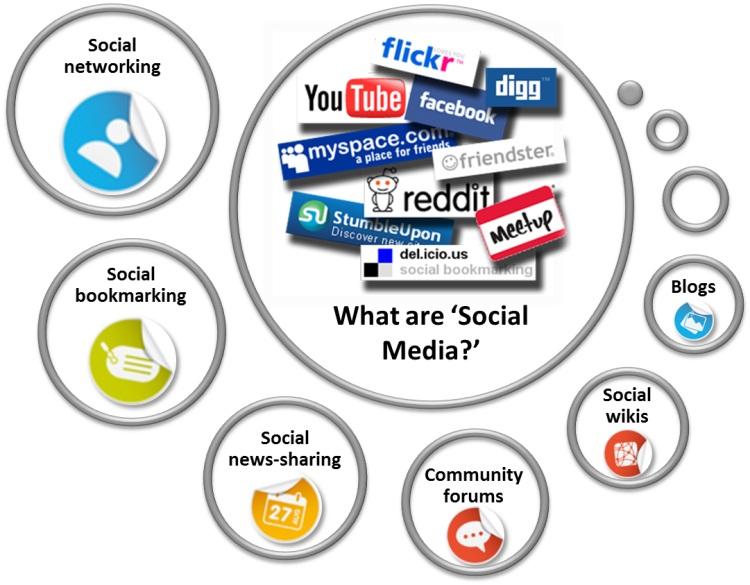
3. Social media experience curve
We describe the collective social media experience of the pharmaceutical industry using what we call the ‘social media experience curve.’ When this new channel opened up, there was a rush to do something – anything – with social media. Next, we saw how much data could be generated by engagement online – from basic demographic information, to where individuals’ eyes go first on a website. While useful, this explosion of data caused a retreat from social media. People just did not know which information was critical, or how to use it. But marketers soon found out that they could motivate people to take action and, ultimately, drive revenue. So data interpretation became less important again. Of course, action can lead to risk, and many companies are – rightly – frightened to engage with customers via social media. By definition, these interactions are uncontrolled… and that makes companies nervous – about adverse event reporting, among many other concerns.
Currently, we stand on the brink of unlocking the true value of social media, where we can manage our risk, while driving conversions – the actions we need customers to take to deliver real results.
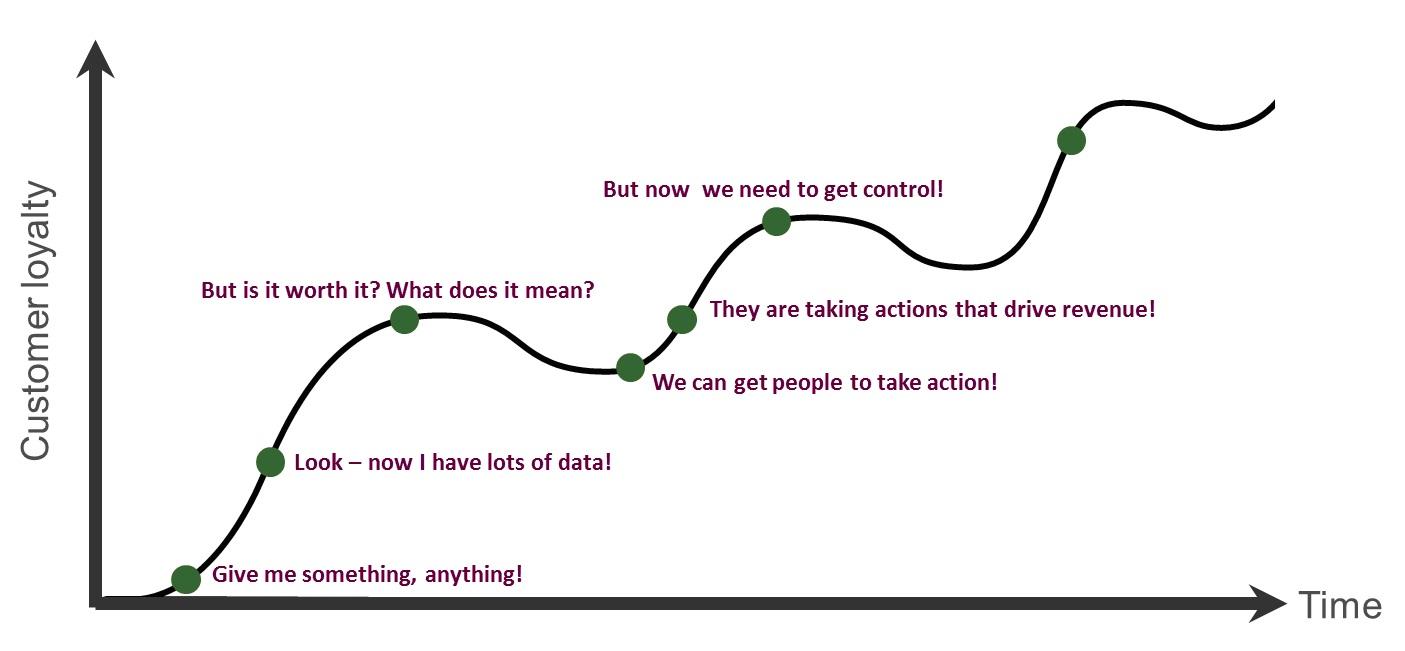
4. Risk/Value Equation

The relationship between the critical factors of value, risk and return on investment can be illustrated by the following equation.
By identifying and then reducing – or, ideally, eliminating – the significant percentage of online spending that marketers claim is wasted, you will automatically increase the value of the funds you do spend. On the risk side of the equation, if your digital governance program protects you from having to spend millions on fines or defending yourself against fines, that is ‘found money.’ That combination will lead to greater overall return on investment for your company.
5. Global statistics and trends
Statistics
While the sheer volume of statistics can sometimes feel overwhelming we have narrowed down the large quantities of numbers available today to the following.
- In 2013, mobile phones will overtake PCs as the most common web access device worldwide.
- Global shipments of mobile devices already exceed those of PCs, laptops and desktops.
- By 2015, it is estimated that 80% of users will access the Internet via mobile device.
- Surveys confirm that 80% of healthcare providers use smartphones.
- 95% of doctors use these devices to access medical information.
- The number one search is for information on prescription drugs.
- It is estimated that 79% of healthcare companies do not have websites optimised for a mobile device.
- The figure may be as high as 90% among pharmaceutical companies.
- Pharmaceutical companies are expected to increase their spending on social media marketing by 79% in 2012, compared to 2011.
- One large pharmaceutical manufacturer is even mandating, as part of its operating planning process, that marketers dedicate 40% of their budget to social media.
- While it changes every minute, current estimates suggest that there are 500 million ‘heavy users’ of social media worldwide.
Trends
The following represent opportunities or issues the industry must overcome to achieve success.
- ‘Size matters…’ The largest healthcare companies have the largest following and people want to know what these companies have to say.
- Implications: Big companies have a responsibility (and an opportunity) to communicate; smaller companies must stand out with their messaging.
- ‘SoLoMo…’This refers to the convergence that is happening now, between social media, local activity and mobile technologies.
- Implications: In many places, pharmaceutical marketers should consider skipping the ‘PC approach’ and go directly to mobile. This is particularly true in developing markets, where broadband internet access may never be as reliable as mobile.
- ‘Closed-loop marketing.’ Powered by the explosive sales growth in tablet device, this will allow almost real-time feedback regarding messages and approaches that are most effective, flexible order-taking and delivery of the richest possible content.
- ‘Sticking to your principles.’To move beyond just doing something to integrating mobile, online and traditional you must focus on good communication
- Implications: Listen, using research and setting proper success metrics; speak in a relevant way, delivering the right message, in the right place, at the right time; and adapt, evolve your messages, based on what you learn from your research.
- ‘If you are standing still, you are going backward…’Do not wait for social media guidance from regulatory authorities; it may never come.
- Implications: Use common sense – Use the same rules when developing online content as when developing offline.
- ‘Paralysis by analysis’can occur because social media are so measurable that large volumes of potentially useful (or useless) data are available.
- Implication: Focus on ‘metrics that matter’, those that deliver your business goals.
6. Measures of digital readiness
Before initiating a social media campaign, marketers must consider how ready their markets are to engage with digital channels, both in terms of the attitudes towards digital among individual healthcare providers, and the technological infrastructure that enables execution of the campaign.
The following graphs represent the relative readiness of various markets around the world to embrace social media. While the details of each category or type of market will vary around the world, the core principles must be understood. For example, Swedenis prepared both from the perspective of available technology and because of the country’s ‘social and cultural environment.’ In contrast, theNetherlands are near the top of the digital readiness list in terms of technology, yet they lag in the area of social and cultural readiness.
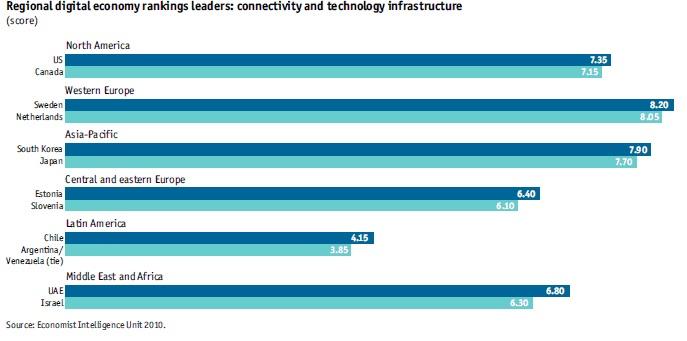
Japan’s digital readiness status is similar to that of theNetherlands’ strong infrastructure, with room to grow, from a cultural perspective, in terms of being ready to engage digitally.

Social Media Usage Data
The graphic below illustrates how users consume social media across Europe; highlights include:
- Throughout the region, social media usage is increasing among members of the public. The fastest-growing area of social media engagement is in what we consider ‘classic’ social networking, such as Facebook.
- Among European healthcare providers, Facebook also dominates the social networking scene, except for theNetherlandsandPoland, where ‘homegrown’ channels retain a dominant position.
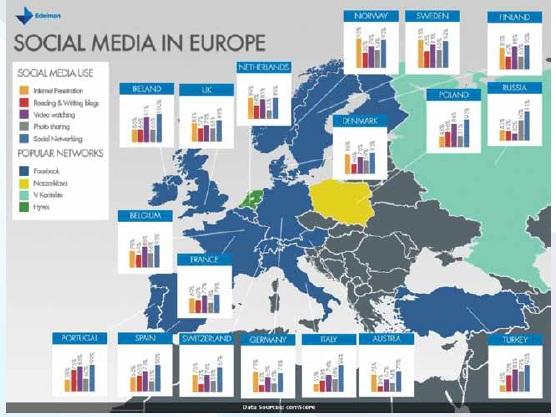
Source: Edelman Digital
Importantly, the details of where healthcare providers are going to interact with one another, and with their patients and other key audiences, is less important than the message that they are going online for such interactions. If we in the pharmaceutical industry are not in social media, we are outsourcing our brand… We are letting others decide what we stand for.
7. Case studies
Bayer on Pinterest
The first case study demonstrates how a large pharmaceutical company has embraced a very new social media channel, Pinterest, which barely existed a year ago, yet today is more popular than the well-established image-sharing site, Flickr.
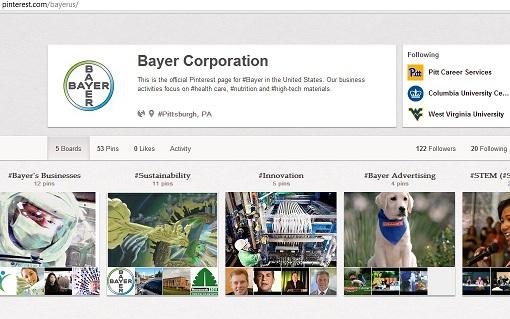
Bayer’s presence on this channel is only a few weeks old, so results are limited. However, the company is approaching 200 followers, and the channel has potential – at a minimum – to drive traffic to other digital assets. Pinterest has nearly 20 million followers in theUnited Statesalone, and it already has emerged as one of the top ‘referrers’ to other sites. Also, critically, Pinterest has the potential to be truly global because it is highly visual and thus less dependent than other social media on language.
Lesson: With the incredible pace of change in social media, it is critical to remain open to new ideas.
Johnson & Johnson’s corporate blog
Blogging was one of the first forms of social media, having been around for a number of years. However, companies continue to innovate, even with perceived ‘boring’ corporate blogs, which are not linked to exciting product marketing campaigns. One of the leaders in the category has been, and continues to be, Johnson & Johnson.

The company innovates with its blog, JNJ BTW, in two ways: via content and by extending its reach. Early on, JNJ recognized the power of its 116,000 employees and opened up the potential for each individual who works for the company to submit content. Over time, the company extended the reach of its initial simple blog externally by linking thoughtfully to its other corporate social media assets on Facebook, Twitter and YouTube. Also, JNJ was one of the first companies to integrate video into its corporate presence – and the company continues to be a leader in this area, with more than 90 non-branded, educational videos accessible to its key stakeholders. Finally, the company is highly focused on key themes like health, employees, help and social.
Five key themes define JNJ’s corporate blogging approach:
- Create compelling content
- Allow dialogue… in a controlled way
- Make it personal
- Integrate with other digital and traditional channels
- Align with commercial objectives
Lesson:
Commit to continuous improvement of established and proven social media ideas.
Pfizer’s ‘Can You Feel My Pain?’
Designed by Pfizer to ‘give a collective voice’ to people living with chronic pain, the information and insights gathered by the ‘Can You Feel My Pain?’ programme have been used to support a wider initiative to communicate the plight of pain patients across Europe to European policy-makers.
 At the core of the campaign was a simple call to action: sign an online petition. From in-depth research conducted among pain patients to determine where they were engaging digitally and what they were talking about, a groundbreaking insight emerged. People in chronic pain did not want to be ‘taken’ somewhere online by a pharmaceutical company, to see or hear promotional messages. Rather, they wanted to share their stories via their preferred social media channels.
At the core of the campaign was a simple call to action: sign an online petition. From in-depth research conducted among pain patients to determine where they were engaging digitally and what they were talking about, a groundbreaking insight emerged. People in chronic pain did not want to be ‘taken’ somewhere online by a pharmaceutical company, to see or hear promotional messages. Rather, they wanted to share their stories via their preferred social media channels.
By integrating everything from email, to image- and video-sharing channels, to social networking sites… by bringing together a wide array of patient advocacy groups… by enabling the sharing of stories across boundaries and languages… the campaign resulted in thousands of signatures being collected, in support of pain patients.
Lesson: Research and insights should lead the development of a fully integrated social media strategy that is simple, yet effective.
McKinsey/Healthcare reform
 The global consulting firm, McKinsey, prepared a study on the potential implications of the planned healthcare reform legislation in the United States. The firm then planned an aggressive social media relations campaign to push its corporate positioning as a thought leader. Unfortunately, McKinsey underestimated just how political the issue of healthcare reform had become, and the firm was attacked, via the very social media channels it had selected, from both the left and the right.
The global consulting firm, McKinsey, prepared a study on the potential implications of the planned healthcare reform legislation in the United States. The firm then planned an aggressive social media relations campaign to push its corporate positioning as a thought leader. Unfortunately, McKinsey underestimated just how political the issue of healthcare reform had become, and the firm was attacked, via the very social media channels it had selected, from both the left and the right.
Lesson: ‘Physician, heal thyself’.
(If you are going to offer thought leadership, and drive acceptance of that message via social media, plan and be prepared to respond to potential attacks.)
‘Push-only’ approach
The final case study refers to a collective attitude amongst pharmaceutical companies that has caused issues across the industry. That attitude is one of wanting to push company or brand messages, and not engage fully online with customers and other key audiences.
The industry has taken this approach due to concerns about the implications of engaging with customers via social media. While it is vital that companies consider, research and plan carefully before engaging in two-way communication and marketing, if the industry does not do so, then its potential growth may be stunted.
 To illustrate, according to the most recent edition of the Social Business Index, which attempts to measure companies’ two-way engagement via social media, just one pharmaceutical company appears in the top 100 – Johnson & Johnson… at number 82.
To illustrate, according to the most recent edition of the Social Business Index, which attempts to measure companies’ two-way engagement via social media, just one pharmaceutical company appears in the top 100 – Johnson & Johnson… at number 82.
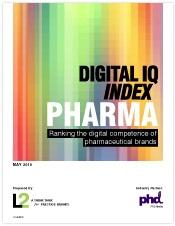 Another index, the Digital IQ Index for Pharmaceutical Brands, reviewed 51 high-spending brands. As the lead researcher stated: ‘The industry as a whole disappoints, as most brands use obsolete technology, anemic content and scant social media programmes.’ To drive home this point… Using Digital IQ Index measurement criteria, more than 60 per cent of pharmaceutical companies’ efforts to reach healthcare providers were termed either ‘Challenged’ or ‘Feeble’.
Another index, the Digital IQ Index for Pharmaceutical Brands, reviewed 51 high-spending brands. As the lead researcher stated: ‘The industry as a whole disappoints, as most brands use obsolete technology, anemic content and scant social media programmes.’ To drive home this point… Using Digital IQ Index measurement criteria, more than 60 per cent of pharmaceutical companies’ efforts to reach healthcare providers were termed either ‘Challenged’ or ‘Feeble’.
It is not practical, nor is it appropriate, for the pharmaceutical industry to embrace social media in the way that consumer-facing industries like retail have done. But the industry also does not need to shrink from engaging with its key audiences via two-way channels.
By adhering to the following rules of thumb, companies can improve their standing:
- Be human
- Get integrated
- Remember that it’s about them, not you
- When asked whether or not to engage with social media, start your answer with, ‘Yes, if…’
Lesson:
Truly commit to going social; establish the necessary governance so you can connect with your customers where they are.
8. Lessons learned
Pharmaceutical team members see departments that have a serious interest in specific areas, for example, Governance. This would include groups like Medical, Regulatory Affairs, Legal and, perhaps, Communications. On the other hand, Information Technology and Digital might have a special interest in Technology, while Marketing will be focused on Outcomes.
No matter which part of the business becomes involved, however, success comes down to planning. If you develop a plan properly, you will know whose buy-in you need to make your initiative a success, and you must make the case for why this initiative is happening. This ensures that colleagues who will either create a pathway – or put up a barrier – to success understand the plan and are motivated by it.
Basing your plan on five core principles will ensure that you make good social media choices. Consider your targets’ interests first, show how you will measure success, understand that it may take time for results to appear, prepare a robust foundation built on governance and invest in the technology you need.
Remember, digital is just another channel.
Keeping these core principles in mind, the first step when considering the key components of a social media plan is to remember that digital is just another channel. We cannot forget that core marketing principles apply to new media, just as they do to traditional outlets such as advertising and product literature. We must take the following steps to increase our chances of success:
- Assess the market
- Understand your customers’ needs
- Compare those to the needs of your brand and your overall marketing mix
- From these, set smart objectives – they must be specific, measurable, achievable, relevant and time-specific
- Once you understand the landscape, you can choose an appropriate social media channel… assuming that such a channel is called for your current situation
- You must measure your success frequently and adjust your strategy as and when necessary
- Underlying all of this is a commitment to conducting frequent research and monitoring your outcomes continually.
With a thoughtful plan in place, yet before you can pursue your strategy successfully, you must build the necessary infrastructure to deliver on that strategy. It is not practical to list every possible consideration, so the following list is meant to be a thought-starter only.
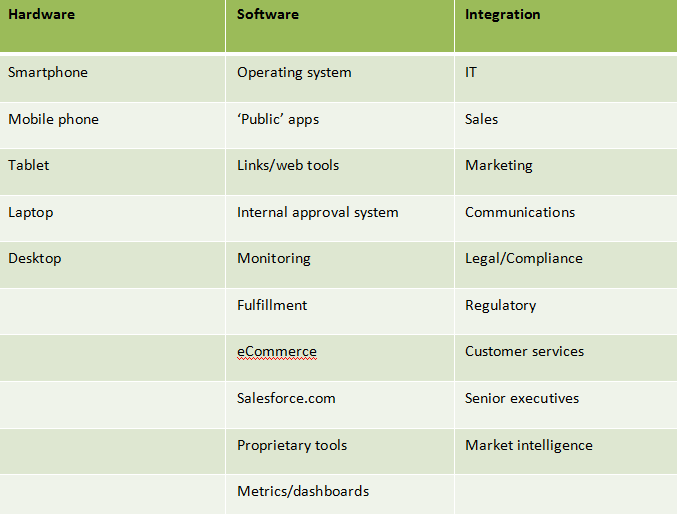
In the very simplest terms, the things you should be thinking about in terms of infrastructure fall into three broad categories: Hardware, software and integration.
- Hardware refers to the ‘tools of the trade,’ the devices that you use to deliver your plan.
- Software refers to the ‘back office,’ the applications that make your devices useful.
- Integration refers to the parts of your business that must be aligned to ensure success.
As another baseline need, we strongly recommend focusing on digital governance. One lesson that we have learned, and which is consistent around the world, is that digital governance is not ‘fool-proof’ for any pharmaceutical marketing organisation.
One approach is to work backward: Start by developing robust, yet flexible, policies, then engage internally. You can follow this up with the development of your social media strategy, then drive that strategy throughout your organization.
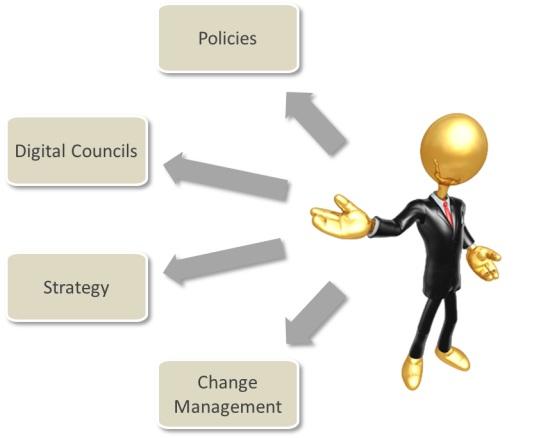 From a practical perspective, we recommend starting by asking some simple questions:
From a practical perspective, we recommend starting by asking some simple questions:
- Have you identified every individual who carries
out mobile or digital marketing at your company? - Can you easily identify your mobile/digital policies
and procedures? - Are you measuring ROI on your mobile/digital
activities? How? - What controls do you have in place to ensure
visibility to every person participating in social
media? Which social media are being used? - What kind of compliance and training are in place to ensure proper use and integration of mobile/digital/social media?
- Do you mechanisms in place so you know everyone who is buying lists, sending marketing texts and emails?
Now that we have our infrastructure set up, and our digital governance is water-tight, we can develop our strategic approach to social media.
While each organisation is unique, making it impossible to dictate how you should go about planning, the following elements represent a good starting point for ANY organization: Situation, objectives, target audiences, strategies, tactics and measurement. The following considerations also should be kept in mind:
- While objectives seem simple to develop, truly good ones require deep thought. For example, one text-messaging campaign will not make your company able to reach its profit number for the year.
- Regarding measurement, keep in mind how the actions you want people to take relate to your business goals.
The critical point about planning refers to one over-arching question: How can we integrate social media into our overall digital and traditional marketing approaches?
In closing, it is good to remember that success in social media begins with individuals. Every person who uses social media – even if they are doctors or nurses – are real people first. Thus, people are greater than technology… In other words, if the solution you are creating is not serving a need that people have, the technology does not matter.

To learn more about global social media trends, contact Robert directly.


